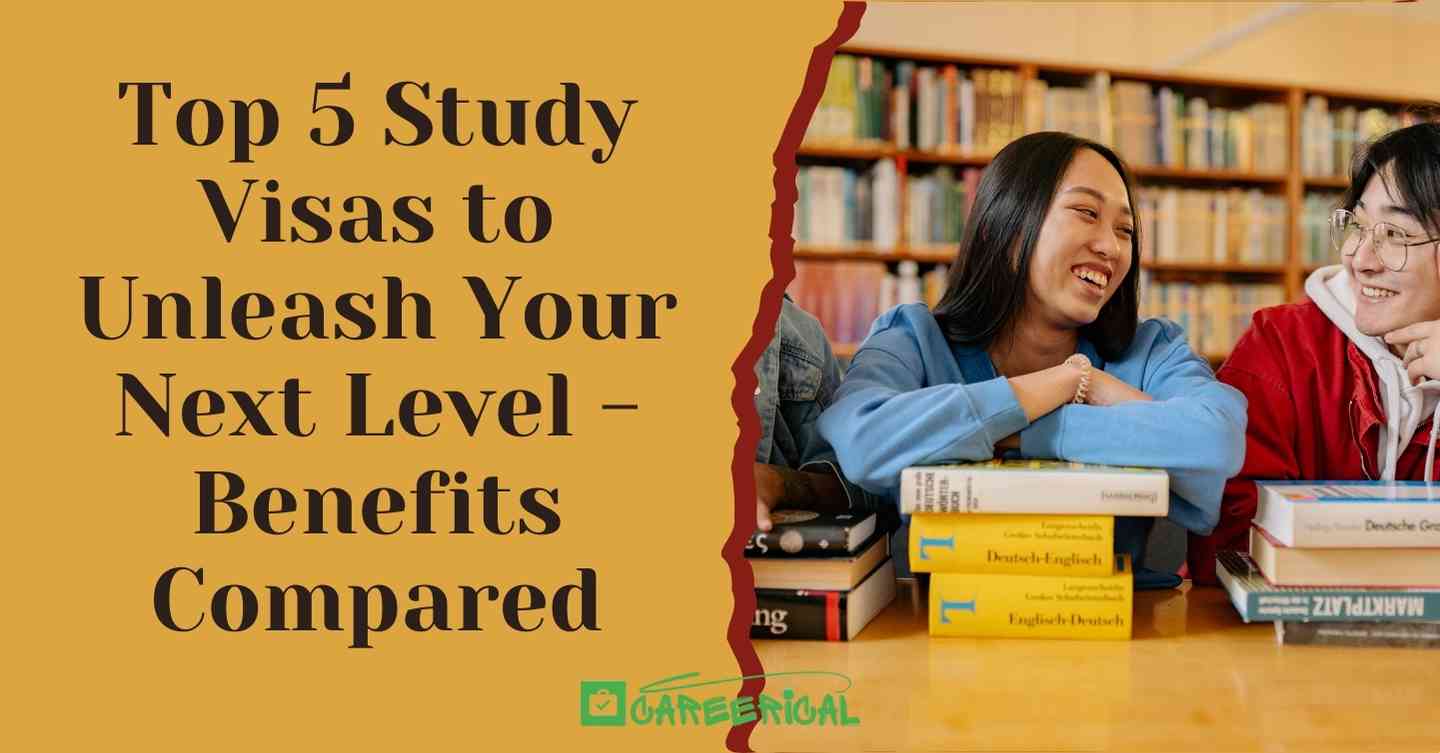🇺🇸 Top 5 Study Visas to Unleash Your Next Level – Benefits Compared
Choosing the right study visa can feel like navigating a maze. What if you could compare the top five destinations side by side, spot hidden perks, and pick the one that best fuels your goals? This guide breaks down the essentials—requirements, processing times, work rights, post-study options, and approval ease—for the United States, Canada, the United Kingdom, Australia, and Germany. By the end, you’ll know exactly which visa gives you the edge you need.
1. United States (F-1 Visa)
The F-1 visa is the gold standard for academic programs in the U.S. You’ll need:
- An I-20 form from a SEVP-certified school
- Proof of sufficient funds
- SEVIS fee payment and a DS-160 application
- A visa interview at a U.S. embassy or consulate
Processing time varies by embassy, but typically takes 1–3 months. F-1 holders can work on campus (up to 20 hours/week) and apply for Optional Practical Training (OPT) after graduation, extending work rights by 12–36 months. For full details, visit the U.S. Department of State’s student visa page: https://travel.state.gov/content/travel/en/us-visas/study.html
2. Canada (Study Permit)
Canada’s study permit is attractive thanks to lower tuition and a straightforward process:
- Letter of acceptance from a Designated Learning Institution (DLI)
- Proof of financial support for tuition, living, return travel
- Medical exam (if required) and police clearance
Processing times range from 4 to 12 weeks. You’re allowed up to 20 hours of work off-campus during term time, full-time in breaks. After graduation, the Post-Graduation Work Permit (PGWP) lets you stay and work for up to three years. Learn more on the Government of Canada’s official portal: https://www.canada.ca/en/immigration-refugees-citizenship/services/study-canada.html
3. United Kingdom (Student Visa)
The UK Student visa (formerly Tier 4) balances prestige with post-study prospects. Key steps:
- CAS (Confirmation of Acceptance for Studies) from a licensed sponsor
- Funds covering course fees and living costs for up to nine months
- Tuberculosis test (depending on your region)
Standard processing is around three weeks. You can work 20 hours/week or full-time during vacations. After completing a degree, the Graduate Route grants two years (three for PhD) to work or seek employment. For the latest guidance: https://www.gov.uk/student-visa
4. Australia (Subclass 500)
Australia’s Subclass 500 student visa offers a four-year stay for higher-ed credentials:
- Offer letter from an Australian institution
- Genuine Temporary Entrant (GTE) statement
- Proof of funds and Overseas Student Health Cover (OSHC)
The process typically takes 4–8 weeks. You can work up to 40 hours every two weeks during study and unlimited hours during breaks. After graduation, the Temporary Graduate visa (Subclass 485) allows 2–4 years of work based on qualification level. Dive deeper on the Department of Home Affairs site: https://immi.homeaffairs.gov.au/visas/getting-a-visa/visa-listing/student-500
5. Germany (National Visa for Study)
Germany combines affordable tuition with strong post-study work options:
- University admission letter and proof of 10,332 EUR annual funds
- Health insurance and blocked account (Sperrkonto)
- Visa interview at a German consulate
Expect 8–12 weeks for visa approval. You can work 120 full days or 240 half-days annually. After graduation, a 18-month residence permit lets you hunt for jobs related to your field. Full details are on Germany Visa: https://www.germany-visa.org/student-visa/
Quick Comparison Table
| Destination | Processing Time | Work Rights During Study | Post-Study Work Permit | Average Cost of Living (Monthly) |
|---|---|---|---|---|
| USA | 1–3 months | 20 hrs/week on campus | 12–36 months OPT | $1,000–1,500 |
| Canada | 4–12 weeks | 20 hrs/week off-campus | Up to 3 years PGWP | CAD 800–1,200 |
| UK | ~3 weeks | 20 hrs/week | 2 years (3 for PhD) | £900–1,200 |
| Australia | 4–8 weeks | 40 hrs/2 weeks | 2–4 years Subclass 485 | AUD 1,100–1,500 |
| Germany | 8–12 weeks | 120 full days/240 half days | 18 months residence permit | €800–1,000 |
FAQs
Which country has the highest study visa approval rate? Approval rates shift year to year, but Germany and Australia often top the charts with streamlined processes and transparent criteria.
How long should I apply before my course starts? Aim for 4–6 months ahead. Popular destinations like the USA and Canada can take longer, especially if additional documents or interviews are required.
Can I switch to a work visa after graduation? Almost all five destinations offer post-study pathways. Check OPT in the U.S., PGWP in Canada, Graduate Route in the UK, Subclass 485 in Australia, and the German residence permit.
What’s the easiest visa to get? While “easy” varies by profile, Germany’s blocked account system and Australia’s clear GTE requirements make them highly accessible for many students.
Do I need an agent to apply? Not necessarily. Official government portals and university advisors provide step-by-step instructions. Agents can help with complex cases, but you can often save money by self-applying.
Selecting the right study visa is about matching your budget, career goals, and lifestyle. Whether you crave an Ivy League classroom, a multicultural campus in Canada, or the affordability of Germany, this breakdown puts the power in your hands. Take a look at official resources, plot your timeline, gather your docs, and launch your global adventure.
More Opportunities:


Post Comment